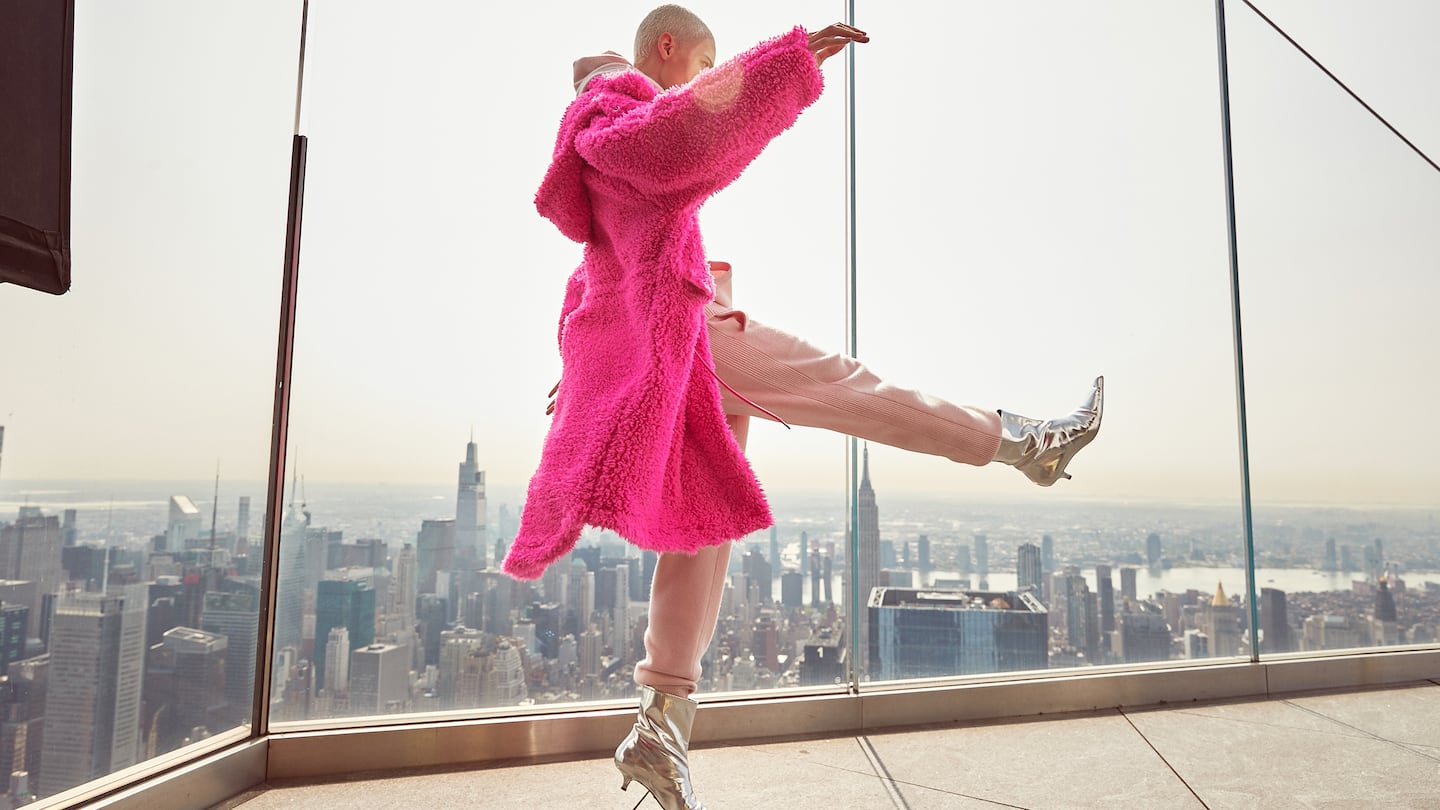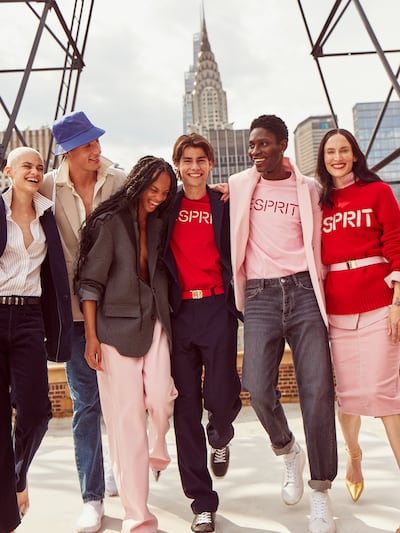
The Business of Fashion
Agenda-setting intelligence, analysis and advice for the global fashion community.

Agenda-setting intelligence, analysis and advice for the global fashion community.

It’s a fashion industry cliche for the leaders of a struggling brand to tell employees and customers they’re “going back to their roots.”
After all, there’s money to be made in exploiting the bits of a label’s DNA that are still relevant to today’s consumer. It’s an approach that’s worked well for a slew of chains in recent years, including J.Crew, Abercrombie & Fitch and Banana Republic.
But the whole heritage thing — studying the archives and brainstorming updates to ‘80s catalogue looks — is the easy part, said Ana Andjelic, who oversaw the revamp at Banana Republic in 2021. She dusted off the brand’s mostly forgotten safari roots for a campaign and collections that evoked a sense of nostalgic ruggedness, a departure for a name by then known as a go-to for pre-pandemic business casual. While Andjelic left after about a year, her makeover played into a notable, if short-lived, uptick in sales.
Whether a brand resuscitation succeeds in the long run, Andjelic said, hinges on the less glamorous work of chipping away at the corporate structures that allowed once-loved labels to fade in the first place.
ADVERTISEMENT
Mostly, that boils down to uniting the entire organisational chart — from the C-suite down to designers, merchandisers and publicists — around one vision that spans the product, the marketing and the customer experience.
In business speak, this is known as “breaking down silos,” and it’s become a popular strategy at brands in need of a shakeup and healthy companies alike. The process often, though not always, comes with the creation of a new role, the chief brand officer, who is responsible for corralling all these functions to speak with one voice.
“Everyone needs to know what everyone else is doing — that’s the number one thing,” said Andjelic, now chief brand officer at Esprit, which like Banana Republic is trying to recapture some of the glory of its heyday in the 1980s and 1990s.
In her short time as CBO at Banana Republic, Andjelic eliminated and restructured a number of positions in the marketing, design, planning and merchandising departments. She stripped merchandisers of their high status in the pecking order of creatives, and made sure every creative team sat in the same meetings and followed the same directives.
Breaking down internal silos was also a critical step for Abercrombie & Fitch when it was mounting a brand revamp under CEO Fran Horowitz in 2017. Whereas the company had previously housed the planning, design and merchandising teams in separate buildings on its corporate campus, Horowitz put these three teams together on the same floor to ensure a higher level of collaboration.
The internal structure matches the needs of a market where shoppers today engage with a brand across multiple channels, from stores and wholesale to social media and print ads. The market is also crowded with new brands, making a clear, consistent pitch all the more important in order to stick in consumers’ brains. Great product and a catchy marketing campaign — staples of the pre-digital era that gave rise to huge brands like Gap and J.Crew — are no longer the only parts of the puzzle.
“Merchandising, design and wholesale have to live together more than ever today,” said retail consultant Robert Burke. “That kind of merchant mentality, that Mickey Drexler type … is very few and far between today, because it’s not enough.”
At Esprit, Andjelic is currently applying what’s becoming her signature formula as chief brand officer: Embrace the heritage of the brand, impose what she calls a collective brand “voice,” and most importantly, set up the internal structure of the company so that every team that touches product is working in tandem with one another.
ADVERTISEMENT
The first step took her a single afternoon. Esprit, after all, embodied the distinct look of the 1980s: bold prints and neon colours. Memphis Group leader Ettore Sottsass designed furniture for the brand’s stores.
But the company faltered in the 1990s. Its two founders, Doug Tompkins and Susie Tompkins, divorced and fought over ownership. (Before Esprit, Doug Tompkins founded the North Face.) By the 2010s, Esprit’s business in the US had dried up, though it continued to operate in Europe and Asia as a Hong Kong-listed operation under the ownership of businessman Michael Ying.
In 2020, the company filed for bankruptcy, shuttered its 50-some stores in Germany and was subsequently acquired by a private family investment firm. The new owners installed William Pak as CEO.
The first order of business was shoring up the company’s finances. In 2021, the brand was able to generate HK$381 million ($48.6 million) of profit on a revenue of HK$8.3 billion — Esprit’s first annual profit since 2017. Next was a US relaunch, including planting its new creative headquarters in New York. Pak tapped Andjelic to oversee the branding of the relaunch in the autumn of 2022, after reading about her efforts at Banana Republic and reaching out via LinkedIn.

Andjelic identified three pillars of the original Esprit — playful, modern, cool — that would inform the entire creative process, from product design and merchandising to styling, communications and social strategy.
From there, she plotted out Esprit’s first full year of collections, inspired by the brand’s archives, which the new management team was able to track down in a warehouse in Germany, alongside a trove of Sottsass furniture.
The first marketing campaign under Andjelic will roll out this autumn, with a full collection arriving in spring 2024, featuring pieces that would be familiar to shoppers who remember Esprit’s heyday: geometric prints, bright hoodies and structured jackets. The idea is for the first few collections to mimic the brand’s history and then move on to build a new code of design that reinterprets the past for modern times.
“You reissue the archives once, and you move on after that,” Andjelic said. “Brands are living, breathing things that need to change all the time.”
ADVERTISEMENT
Executing on a brand vision is not a one-person job.
“We are brought in often to revitalise brands, whether it’s working with the creative director or restructuring the C-suite,” said Karen Harvey, an executive recruiter in fashion. “What we always think about is the talent strategy first. Who is a person who’ll understand the brand’s heritage but also understand how to bring relevance to it today?”
At Esprit, Andjelic’s team includes a global senior vice president of design, Thomas Cawson, a Helmut Lang alum. The global vice president of creative, Joseph Akel, as well as vice president of commercial planning Stephanie Levy, Andjelic tapped from Banana Republic. Now, she’s hiring for a head of marketing. Her team also includes a director of store experience and a director of marketing operations.
Under the stewardship of Horowitz at Abercrombie, the unifying factor for ensuring that product, marketing and other creative efforts at the retailer was a playbook approach called “One dream, one team.” This playbook defines a brand’s product, voice and consumer-facing experience, and can be updated every year through cross-functional input.
“You need a number of key partners at the table who have real expertise in each pillar: voice, strategy, product, and bringing experiences and retail to life,” said Harvey. “But there needs to be that reason for brand [experts] and marketers to lead” — regardless of whether that role is chief brand officer, chief marketing officer or creative director.
Esprit aims to increase prices and offer more premium materials like leather and suede. To pull that off, the brand will have to demonstrate that it can stand out from the crowd, according to Burke.
“This is very heavy lifting, given the competitive landscape today,” he said. “I would want to see a clear brand [proposition]: ‘Here’s the opportunity, here’s the space we’re going to occupy, and here’s why we’re different from everybody else.’”
It faces tough odds. Failed comebacks outnumber successes: Donna Koran and Sonia Rykiel are two examples, according to Jackie Chiquoine, a strategy director at Sparks & Honey, a cultural intelligence consultancy.
Banana Republic has also struggled to maintain the momentum from its reboot last year. Sales at the brand dipped 10 percent in Gap Inc.’s most recent quarter.
“It begs the question, does every brand need to live forever?” Chiquoine said.
The mall retailer saw sales rise after swapping generic office clothes for a stronger point-of-view inspired by its safari-themed origins. The new look wasn’t for everyone – and that was the point.
Banana Republic, J.Crew, Express and others are all promoting a new, more digital and fashion-forward identity in a bid to regain relevance. But a rebrand is no easy feat.
The odds of making it through bankruptcy intact are growing smaller. BoF looks at what happens when a brand goes through the process — and then rises again under new ownership.

Cathaleen Chen is Retail Correspondent at The Business of Fashion. She is based in New York and drives BoF’s coverage of the retail and direct-to-consumer sectors.
Designer brands including Gucci and Anya Hindmarch have been left millions of pounds out of pocket and some customers will not get refunds after the online fashion site collapsed owing more than £210m last month.
Antitrust enforcers said Tapestry’s acquisition of Capri would raise prices on handbags and accessories in the affordable luxury sector, harming consumers.
As a push to maximise sales of its popular Samba model starts to weigh on its desirability, the German sportswear giant is betting on other retro sneaker styles to tap surging demand for the 1980s ‘Terrace’ look. But fashion cycles come and go, cautions Andrea Felsted.
The rental platform saw its stock soar last week after predicting it would hit a key profitability metric this year. A new marketing push and more robust inventory are the key to unlocking elusive growth, CEO Jenn Hyman tells BoF.